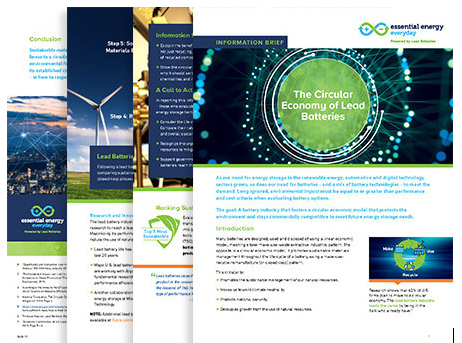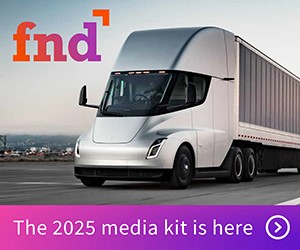Earth Day: New Brief Offers Lead Battery Industry As Circular Economy Example

Environmental Impact is Essential Criteria When Evaluating Battery Options
In conjunction with Earth Day, the lead battery industry has published a new information brief (found at EssentialEnergyEveryday.com) detailing how lead battery manufacturers and recyclers demonstrate leadership in implementing a circular economy. The lead battery industry is an innovator in the circular economy, and one of only 16% of U.S. industries that follows a make-use-recycle manufacturing business strategy. This circular approach means the lead industry is both protecting the environment and remaining commercially competitive in order to meet future energy needs.
“Our industry provides a circular economy model for batteries, as well as other industries,” said Kevin Moran, executive vice president of Battery Council International (BCI). “Lead batteries are a model of a take-make-use-recycle and reuse closed-loop system, compared to other battery chemistries that follow a linear model of take, waste and dispose.” Moran cited the nearly 100% recycling rate of lead batteries, and the fact that every battery is comprised of at least 80% recycled lead.
The information brief and accompanying infographic highlight the key benefits of the closed-loop system as promoting the sustainable management of our natural resources, moving us toward climate neutrality; protecting national security; and decoupling growth from the use of natural resources.
The document also describes how the lead battery industry is achieving circularity. For example, manufacturers and recyclers work together to design batteries to be efficiently recycled for reuse and remanufacture. They also deploy a sophisticated collection and transportation system to collect spent batteries for recycling and pick-up finished lead metal for manufacturing. Additionally, the industry employs sustainable manufacturing practices ranging from recycling millions of gallons of water for use in new batteries, and collecting and reusing storm water, to relying on solar installations to power facilities. In one instance, a new revenue stream has been created by producing a liquid fertilizer solution for agricultural use from the sulfur fumes created during recycling.
As a call to action, the brief asks decision makers to deeply consider a battery’s life cycle environmental footprint when selecting a battery technology. Sustainable materials management in non-lead battery manufacturing requires a paradigm shift from a linear to a circular economic model with stakeholders. The lead battery industry is a model for all battery technologies, especially as the move to electrification and decarbonization intensifies.
Category: Featured, General Update, Green, News










